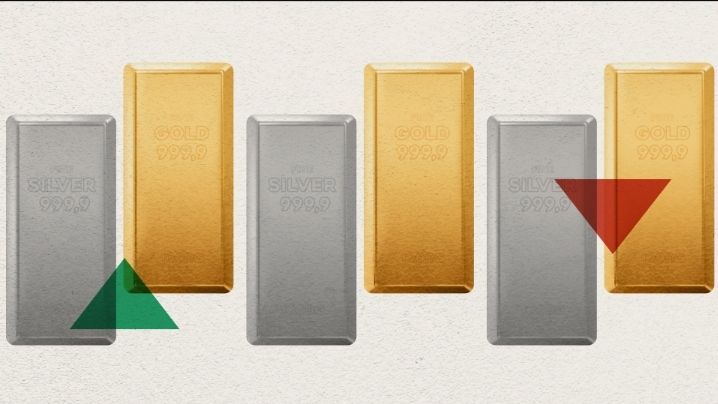
SOURCE
Diving into the fascinating world of precious metals, one quickly encounters the pivotal concept of the gold-to-silver ratio—a critical metric that reveals the relative value of these two metals. This ratio, simply put, indicates how many ounces of silver are needed to purchase one ounce of gold at any given time. While widely known, it is often misunderstood, yet it serves as a crucial indicator for investors navigating the volatile waters of the market.
The history of the gold-to-silver ratio is a reflection of economic shifts, political changes, and societal developments. This metric has evolved through the ages, from the opulence of ancient Egypt, where it was around 2.5:1, to the structured markets of the Roman Empire with a fixed ratio of 12:1. The discovery of vast silver deposits in the Americas during the Age of Exploration drastically altered the ratio, demonstrating how new resources can shift global trade dynamics.

SOURCE
The 20th century introduced even more volatility with the abandonment of the bimetallic standard and the advent of fiat currencies. This era saw the ratio fluctuate wildly, from the high points of economic crises to the more stable periods. For instance, the oil crisis of the 1970s brought the ratio down to 17:1, reflecting a period of high inflation and economic instability. More recently, the financial crisis of 2008 caused the ratio to spike as investors flocked to gold for security, while technological advancements have renewed interest in silver, influencing the ratio yet again.
The gold-to-silver ratio is not just a number; it is a narrative of human history and economic evolution. It reflects shifts in industrial demand, changes in mining outputs, and the impact of government policies. Silver's versatility in technology and industry, from electronics to renewable energy, makes it more susceptible to changes in industrial demand than gold, which is often sought for its status as a safe-haven asset.

SOURCE
Understanding the nuances of the gold-to-silver ratio can provide valuable insights for investors. A high ratio may suggest that silver is undervalued, presenting a buying opportunity for those anticipating a market correction. Conversely, a low ratio may indicate that gold is relatively undervalued. However, successful investing requires more than just following this ratio; a comprehensive analysis of market conditions and economic indicators is essential to making informed decisions.
In essence, the gold-to-silver ratio serves as a window into the broader economic landscape. It is a timeless marker that captures the complexities of global markets, technological advancements, and human ingenuity. For those looking to navigate the intricate maze of precious metals investing, this ratio offers a guiding light, helping them make wise choices and manage their wealth prudently.

If you dont own any precious metals, then why not tell us? As a community we encourage ALL engagements and encourage everyone to take the plunge and own at lease a sinlge ounce of silver or a fraction of gold. If your struggleing to find a safe and secure place to buy, reach out to the community as there is always someone willing to offer their time and advice to help you out.

40+yr old, trying to shift a few pounds and sharing his efforsts on the blockchain. Come find me on STRAVA or actifit, and we can keep each other motivated .

Proud member of #teamuk. Teamuk is a tag for all UK residents, ex-pats or anyone currently staying here to use and get a daily upvote from the community. While the community actively encourages users of the platform to post and use the tag, remember that it is for UK members only.
Come join the community over on the discord channel- HERE

Want to find out more about gold and silver? Get the latest news, guides and information by following the best community on the blockchain - silvergoldstackers. We're a group of like minded precious metal stackers that love to chat, share ideas and spread the word about the benefits of "stacking". Please feel free to leave a comment below or join us in the community page, or on discord.
